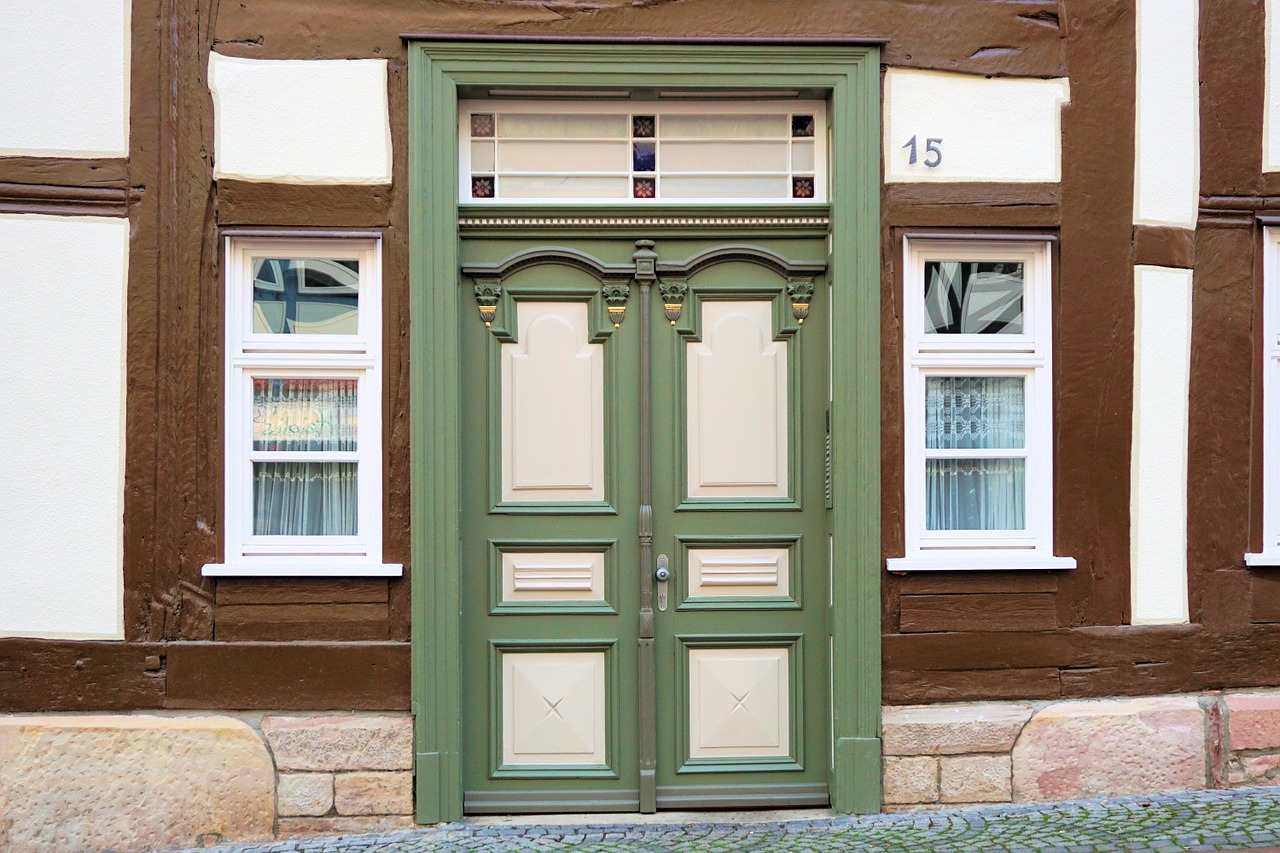How to Fix and Maintain an Entry Door and an Interior Door

STEPS IN FIXING DOORS:
How to fix and maintain an entry door (Part 1)
Fixing entry doors is necessary for a time due to being exposed to dampness and changing weather conditions. Exterior doors are built stronger than interior doors so they can better withstand these conditions. In time, entry doors will not close completely or will not open easily since the wood in the doors and frames will swell or contract due to changes in temperature and humidity. Also, if there is a lot of traffic in and out, the door is subject to damage.
1. DOOR STICKS
Check for dirt buildup along the edges of the door and door jambs. Inspect the hinge mounting screws making sure they are tight. When fixing doors that are sticking, always check and adjust the door hinges if necessary to see if that will correct the problem. If the door still sticks, sand down or plane the edges of the door.
2. WILL NOT SWING EASILY
Clean the hinges by first removing the pin. Using light sandpaper or steel wool, clean the surface of the pin and contact surfaces of the hinge. Always lubricate the hinges with silicone lubricant when fixing doors.
3. AIR ENTERING WHEN CLOSED
If drafts are entering around the door, the door needs to be sealed. Check for gaps in the door frame on the exterior and caulk if needed. Replace or install weatherstripping when fixing doors at entrances. If the air is coming in at the bottom of the door, replace the seal located in the threshold and adjust the threshold if needed. If the threshold does not have a seal, install a door sweep.
4. INSTALLING A DOOR SWEEP
Measure the distance between the right and left door jambs. Cut the length of the door sweep one-quarter of an inch less than the measurement. With the door closed, position the door sweep on the door with it contacting snugly against the threshold. Attach only two screws into the door sweep to start with; one on the far right and the other on the far left. Now open and close the door making sure the door swings easily and the sweep makes a good seal with the threshold when closed. If so, attach the remaining screws.
Fixing an interior door (Part 2)
In most cases, when an interior door binds, it binds on the latch side of the door. Check for loose screws in the hinges. If loose, remove all loose screws, and either fill the screw holes with tapered wood inserts and re-install the screws or install longer screws. The new screws should be long enough to reach the stud behind. Never just re-tighten the loose screws, since in time they may loosen up again.
1. BOTTOM OF LATCH SIDE BINDING
When fixing doors, always check the door jamb to make sure it hasn’t shifted. Remove the bottom portion of the jamb casing and holding a wood block against the jamb, tap the block. Close the door and check for binding. If there is no binding, check the clearance between the door and jamb. It should not be over one-eighth of an inch. If over this, add shims between the jamb and stud. When the proper clearance is reached, re-nail the jamb with 10d nails and re-install the door casing. If the jamb has not shifted, remove the door and plane or sand the binding edge.
2. OTHER AREAS OF LATCH SIDE BINDING
Check to make certain that the door jamb has not loosened causing the binding by tapping on the jamb with a hammer and woodblock. If the jamb is secure, remove the door and place it on a flat platform. Next, remove the latch assembly. Using a plane or sander, plane or sand the edge of the door. If more desirable, stand the door on the hinged edge and plane or sand horizontally. Re-install the door without the latch and check for clearance. If the door closes freely, next check to see if all the edges of the door are sealed. If not sealed, moisture could enter and cause swelling which will result in binding. When fixing doors, check all edges of the door to be certain they are covered with paint or varnish, particularly exterior doors. Re-install the latch and door
3. TOP OF DOOR BINDING
Check to shift of the door jamb as described in #2 when fixing doors. If the jamb is secure, remove the door and either sand or plane the binding edge and re-install the door.
4. DOOR DOES NOT LATCH
Due to shifting of the door or door frame, the door latch bolt may not enter into the strike plate. Using a marker or lipstick, color the edges of the latch bolt. After closing and opening the door, view the strike plate for a mark from the bolt. If the mark is less than one-eight of an inch from the strike plate opening, enlarge the opening with a file. If over one-eighth of an inch, re-position the strike plate to provide proper latching. When fixing doors, always remove enough wood behind the strike plate opening to allow clearance for the strike bolt.
Comments
Post a Comment